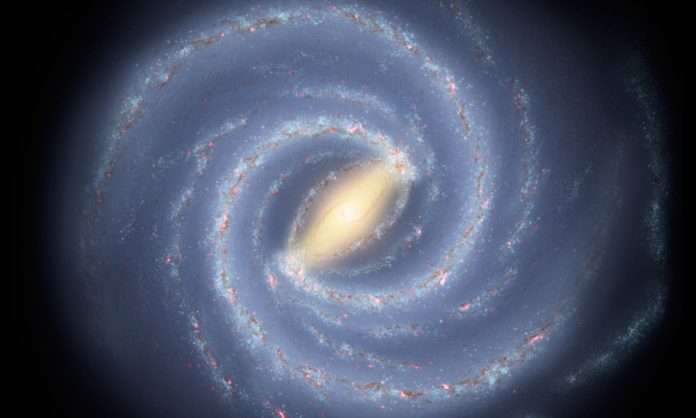A massive black hole with the mass of 100,000 of the Sun has recently been found in a toxic gas cloud revolving around the heart of the Milky Way. Scientists call it the galaxy’s second-largest known black hole.
The discovery was done coincidently by astronomers in Japan while turning a powerful telescope in the Atacama desert in Chile towards the gas cloud. They were actually searching for the hope of understanding the strange movement of its gases.
As it has an incredibly huge mass, it could not hope to compare to supermassive black holes that lie at the center of galaxies, with up to 10 billion solar masses. This newly discovered black hole was found in the gas cloud, CO–0.40–0.22. The CO–0.40–0.22 is thought to be bound for a moderate, one-route trip towards Sagittarius A*, a supermassive void at its very center, into which it would ultimately be subsumed.
Scientists detected unusual movements in CO–0.40–0.22. The movements suggested some massive force that accelerated matter inside the cloud, which scientists described as the best candidate yet for an intermediate-mass black hole.
Now, scientists have new measurements to back up their previous findings. During analysis, they identified the distribution of velocities inside a clump of gas in the cloud. This time, they found a spectrum of radio waves similar to those produced by Sagittarius A*. But the waves were 500 times less luminous.
Tomoharu Oka, an astronomer at Keio University in Tokyo, said, “This black hole lay in the midst of the gas cloud. It received a boost when observations picked up radio waves indicative of a black hole coming from the centre of the cloud. This is the first detection of an intermediate-mass black hole candidate in the Milky Way galaxy.”
“This newly found massive black hole could be the core of an old dwarf galaxy that was cannibalised during the formation of the Milky Way billions of years ago.”
Brooke Simmons at the University of California in San Diego said, “We know that smaller black holes form when some stars die, which makes them fairly common. We think some of those black holes are the seeds from which the much larger supermassive black holes grow to at least a million times more massive.”
“That growth should happen in part by mergers with other black holes and in part by accretion of material from the part of the galaxy that surrounds the black hole.”
“Astrophysicists have been collecting observational evidence for both stellar mass black holes and supermassive black holes for decades. We think the largest ones grow from the smallest ones. But we’ve never really had clear evidence for a black hole with a mass in between those extremes.”
Journal Reference
- Oka, T., Tsujimoto, S., Iwata, Y., Nomura, M., & Takekawa, S. (2017). Millimetre-wave emission from an intermediate-mass black hole candidate in the Milky Way. Nature Astronomy, 1(10), 709-712. DOI: 10.1038/s41550-017-0224-z
